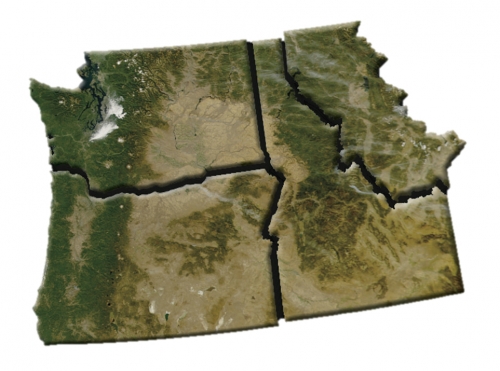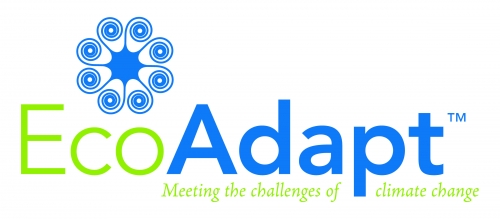Prescribed Fire and Climate Change in Northwest National Forests
Overview
Climate change is one of the most pressing issues facing natural resources management, and decision makers at all levels are faced with choices on how to avoid, minimize, adapt to, and/or mitigate climate change impacts. Practitioners often struggle with how to identify and prioritize specific climate adaptation actions. Management actions may have a higher probability of being successful if they are informed by available scientific knowledge and findings. By evaluating specific actions on scientific knowledge and findings, we may be able to increase resource management effectiveness and efficiency.
The goal of the Available Science Assessment Process (ASAP) is to synthesize and evaluate the body of scientific knowledge on specific, on-the-ground climate adaptation actions to determine the conditions, time frames, and geographic areas where these actions may be most effective for resource managers.
 Our methodology utilizes interviews, a systematic review process to scientifically assess management-relevant questions, and extensive engagement with natural resource managers and scientists throughout the Northwest Climate Science Center (NW CSC) region. For a test case, we will evaluate the science behind specific fire management actions in national forests in the region. This was a pilot project where the emphasis was on developing a process for future ASAPs.
Our methodology utilizes interviews, a systematic review process to scientifically assess management-relevant questions, and extensive engagement with natural resource managers and scientists throughout the Northwest Climate Science Center (NW CSC) region. For a test case, we will evaluate the science behind specific fire management actions in national forests in the region. This was a pilot project where the emphasis was on developing a process for future ASAPs.Why Fire?
Climate change will likely significantly alter fire regimes in the western United States. Climate-driven increases in wildfire risks, insect outbreaks, diseases, and invasive species establishment will likely alter forested landscapes through species and habitat expansion, contraction, or conversion, affecting overall ecosystem health and productivity.
Why National Forests?
The USDA Forest Service enacted the National Forest System 2012 Planning Rule, highlighting the need to consider climate change impacts in forest planning, including assessing vulnerability of forest resources to climate change and developing adaptation strategies to reduce vulnerabilities of key resources. Similarly, the Forest Service Climate Change Performance Scorecard was created to allow each national forest to evaluate the organizational capacity to assess vulnerability to climate change and take action to reduce the vulnerability of key resources on an annual basis. All 155 national forests and 20 grasslands are required to revise their land management plans. Several forests in the NW CSC region are undergoing vulnerability assessments and climate adaptation planning processes (e.g., Adaptation Partners, EcoAdapt's work in western forests).
What are Fire-Related Climate Adaptation Actions?
A “climate adaptation action” is any action taken to either increase/enhance resilience or decrease vulnerability in a changing climate. Traditional management actions that explicitly incorporate climate change considerations and aim to alleviate the impacts of climate change by increasing resilience and/or decreasing vulnerability are considered to be climate adaptation actions. They may be anticipatory or responsive;
autonomous or planned; and short term or long term. With respect to fire, typical applied actions include thinning, prescribed fire, managed wildfire, seeding fire-resistant species, and the removal of fire-prone species that may exacerbate fire regimes.
Methodology
Phase 1: Define issues, scope, and framing for ASAP systematic reviews
- Collect, review, and catalog national and regional climate change strategy documents to identify the most important and discussed climate stressors
Phase 2: Identify climate adaptation actions used in response to the chosen climate stressor
- Identify, characterize, and catalog climate adaptation plans and fire-related climate adaptation actions
- Interview managers and scientists to identify commonly used fire-related climate adaptation actions, and compare to those contained in climate adaptation plans
- Identify top 3-5 fire-related actions for systematic review
Phase 3: Conduct a systematic review of the science behind a particular climate adaptation action
- Systematically evaluate (via literature review) the science behind the selected fire-related action
- Write and disseminate a synthesis report
- Conduct a Science Review Panel meeting
- Conduct a manager-scientist meeting to promote collaboration and knowledge sharing on fuels treatments in a changing climate
Phase 4: Evaluate and share the results of the systematic review and the ASAP process
- Qualitatively and quantitatively evaluate and share the methods and lessons learned to improve future ASAP systematic reviews
Managers - Scientists Workshop (April 11, 2016)
Culminating ASAP, EcoAdapt and partners will be holding a collaborative workshop in conjunction with the 5th International Fire Behavior and Fuels Conference in Portland, Oregon. This workshop brings managers and scientists together for broader discussions regarding fuels management in the context of climate change. Check out the workshop support page here.
Funded by

Products
- Synthesis report documenting ASAP fire science systematic review process and outcomes
- Evaluation report documenting lessons learned and providing recommendations for future ASAP systematic reviews
Partners






